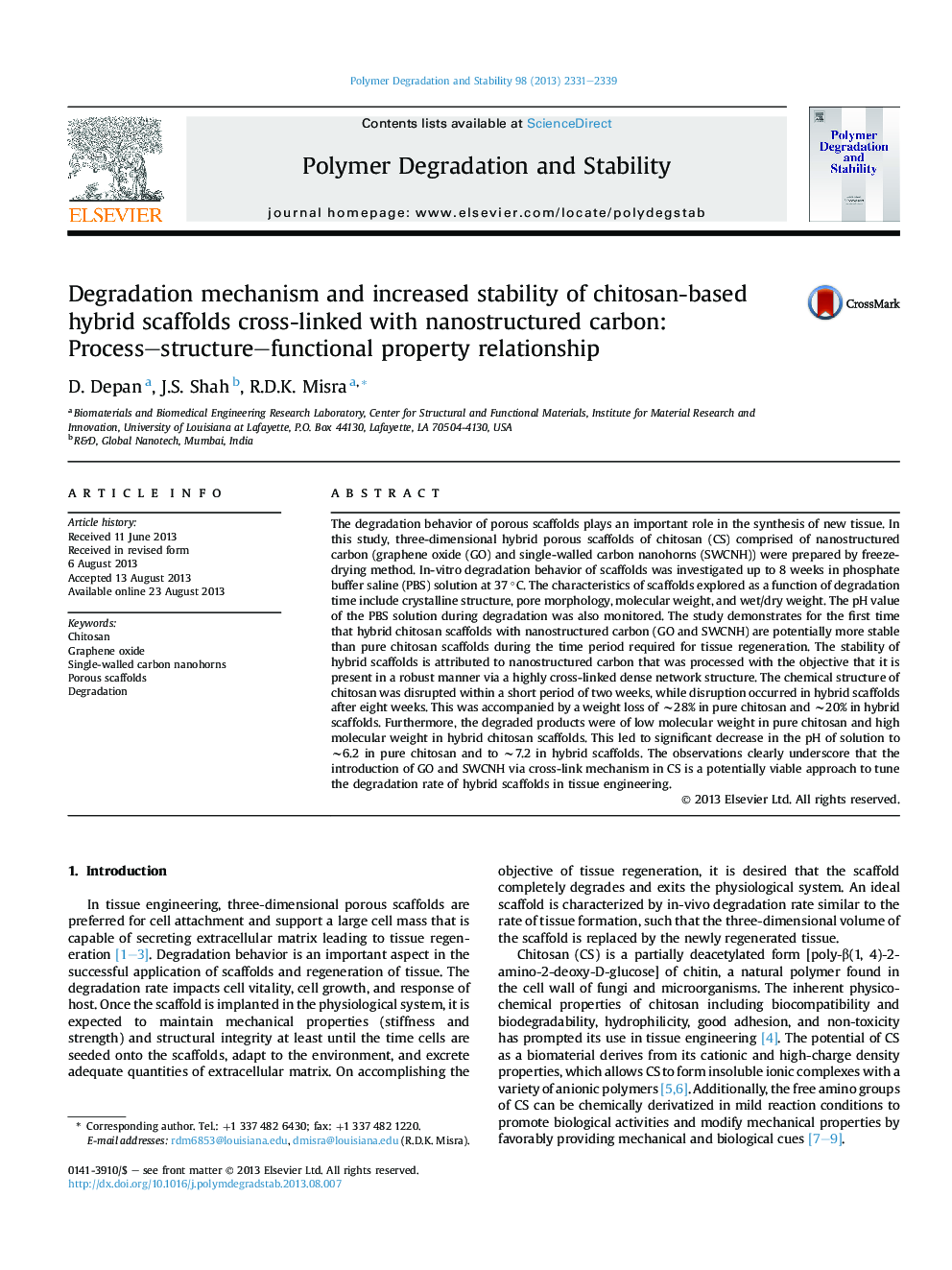| Article ID | Journal | Published Year | Pages | File Type |
|---|---|---|---|---|
| 5202274 | Polymer Degradation and Stability | 2013 | 9 Pages |
The degradation behavior of porous scaffolds plays an important role in the synthesis of new tissue. In this study, three-dimensional hybrid porous scaffolds of chitosan (CS) comprised of nanostructured carbon (graphene oxide (GO) and single-walled carbon nanohorns (SWCNH)) were prepared by freeze-drying method. In-vitro degradation behavior of scaffolds was investigated up to 8 weeks in phosphate buffer saline (PBS) solution at 37 °C. The characteristics of scaffolds explored as a function of degradation time include crystalline structure, pore morphology, molecular weight, and wet/dry weight. The pH value of the PBS solution during degradation was also monitored. The study demonstrates for the first time that hybrid chitosan scaffolds with nanostructured carbon (GO and SWCNH) are potentially more stable than pure chitosan scaffolds during the time period required for tissue regeneration. The stability of hybrid scaffolds is attributed to nanostructured carbon that was processed with the objective that it is present in a robust manner via a highly cross-linked dense network structure. The chemical structure of chitosan was disrupted within a short period of two weeks, while disruption occurred in hybrid scaffolds after eight weeks. This was accompanied by a weight loss of â¼28% in pure chitosan and â¼20% in hybrid scaffolds. Furthermore, the degraded products were of low molecular weight in pure chitosan and high molecular weight in hybrid chitosan scaffolds. This led to significant decrease in the pH of solution to â¼6.2 in pure chitosan and to â¼7.2 in hybrid scaffolds. The observations clearly underscore that the introduction of GO and SWCNH via cross-link mechanism in CS is a potentially viable approach to tune the degradation rate of hybrid scaffolds in tissue engineering.
